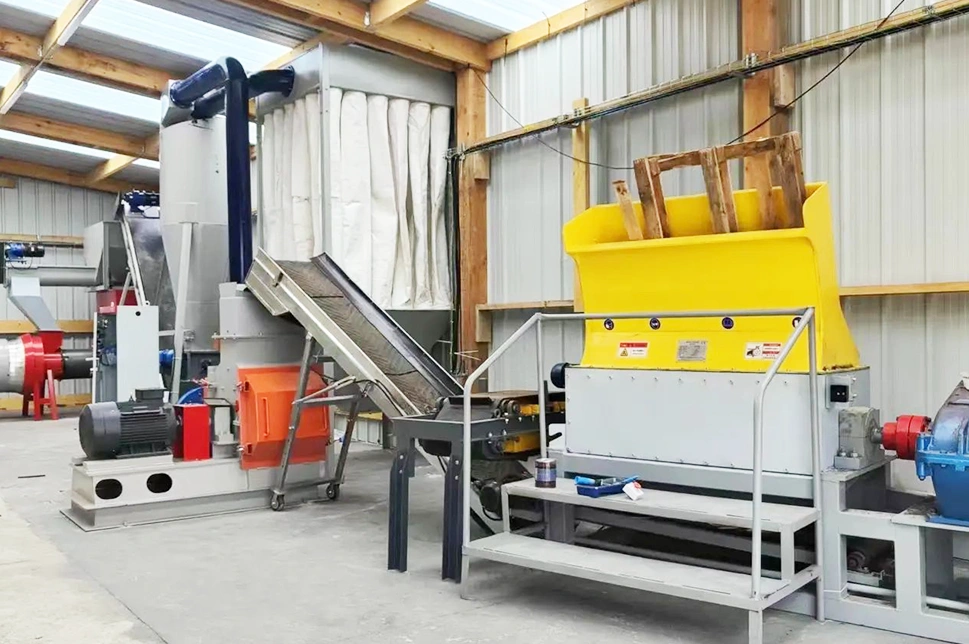1–1.5 T/H Wood Waste Pellet Production Line in Oman
A client in Oman runs a 2,000 m2 factory producing cabinet doors, pallets, and furniture panels. Large piles of wood scraps and old boards took up space and posed safety risks.
After MECA tightened waste regulations, open dumping and burning were banned. The client had been paying high disposal fees every month, so he looked for an on-site recycling solution.

He learned about our pellet projects in the UAE and Saudi Arabia and visited our factory for testing. Impressed by the results, he ordered a 1–1.5 t/h biomass pellet line tailored to his materials and plant layout. The system covers crushing, drying, pelletizing, cooling, and packing, arranged in two workshops.
Crushing Section
Waste wood is first fed into a shredder by a loader, where twin rotors cut it into small strips a few centimeters long.

The crushed pieces are then conveyed to a wood crusher for fine grinding to 3–6 mm, meeting the size requirement for drying and pelletizing. A cyclone and dust collection system are installed to reduce dust and keep the workshop clean.
Drying Section
Crushed wood chips are dried to reduce moisture before pelletizing. The system includes a hot air furnace, conveyor, and rotary dryer.

Hot air from burning wood pellets flows through the rotating drum, where the chips mix and dry evenly.
The moisture is reduced to about 10–12 percent before the material moves to the next stage.
Dust Removal Section
To control dust generated during crushing and drying, the line is equipped with cyclone separators and discharge valves in both sections, effectively reducing airborne dust.

After crushing, wood chips enter a cyclone separator where centrifugal force separates heavier particles from the air. Large chips fall into the hopper, while fine dust is filtered and collected.
After drying in the rotary dryer, the exhaust air still contains some dust. A second cyclone separator is installed at the dryer outlet for further cleaning.
The airflow spins rapidly inside, causing dust to settle along the wall, and the cleaned air is discharged through the outlet pipe.
Pelletizing Section
The line uses a KH-560 ring die pellet mill to compress dried wood chips into dense biomass fuel pellets. After extrusion, the hot pellets are cooled and screened. Broken or unformed pellets are automatically returned for re-pelletizing, while qualified pellets are lifted to the packing machine for automatic weighing and sealing.

The line started production in March 2025 and has been running steadily.
The pellets are dense and well formed. Some are used as fuel for the factory's dryer, and the rest are sold to local industries for boilers. This not only solved the waste problem but also brought additional income.
 Online Contact
Online Contact Send Message
Send Message
Need Some Help?
Contact us quickly and we will reply you within 24 hours. We will not disclose your information.